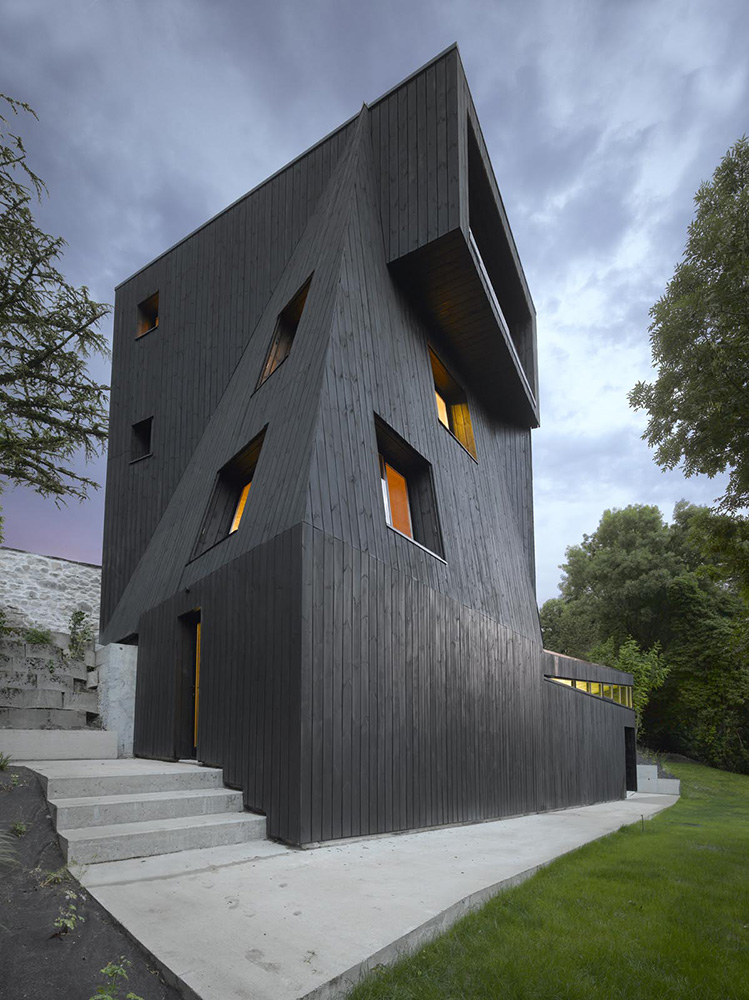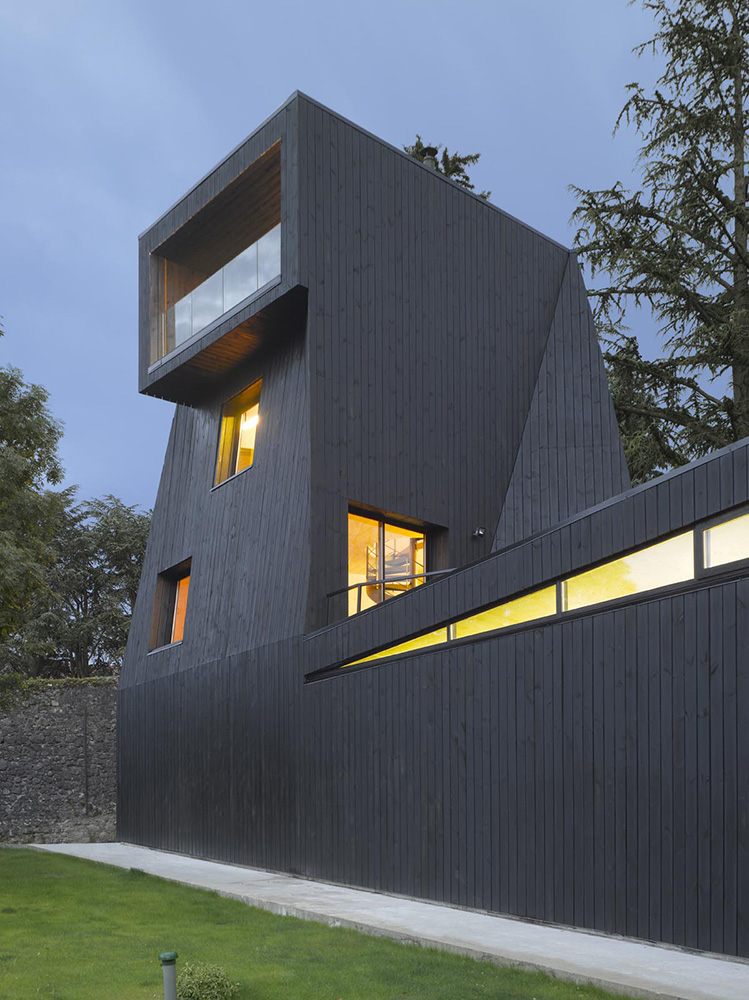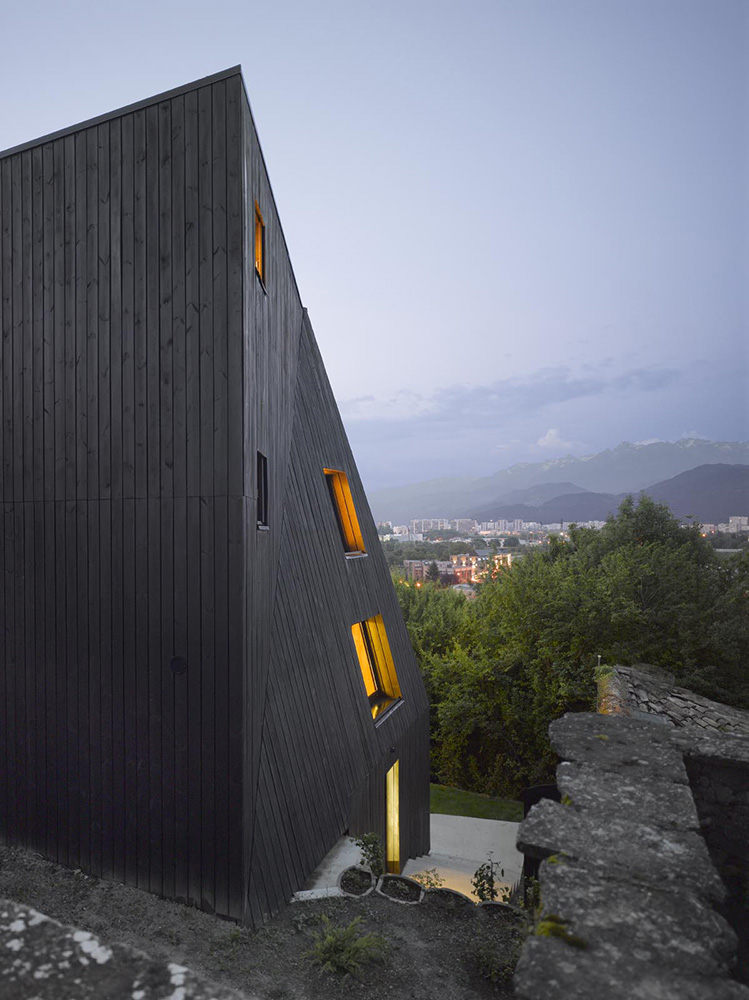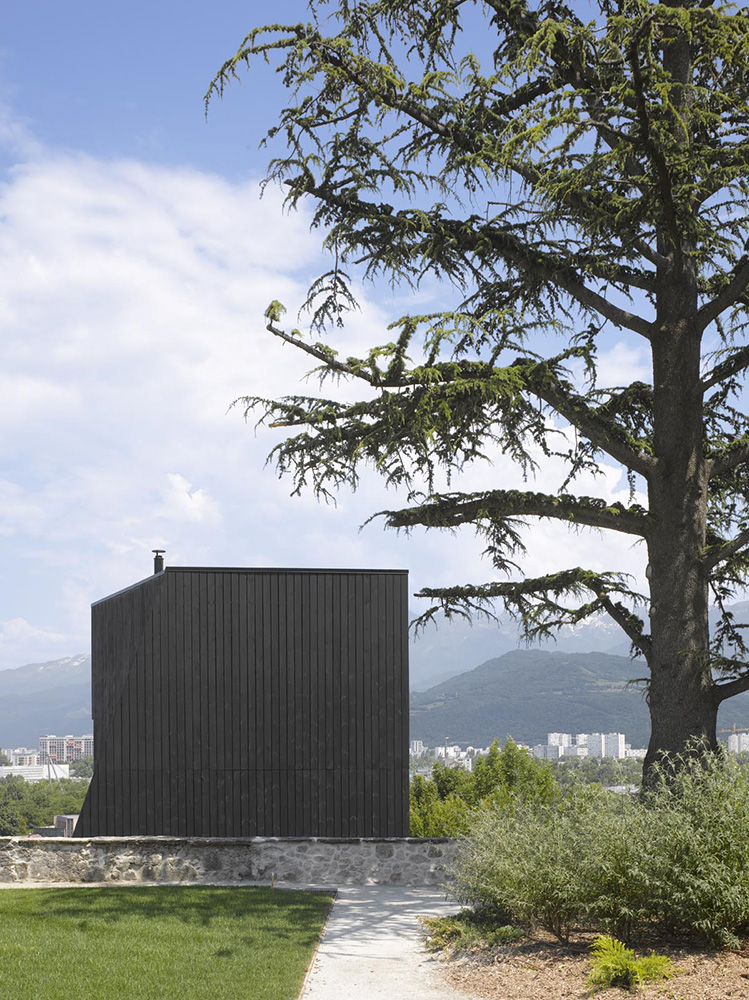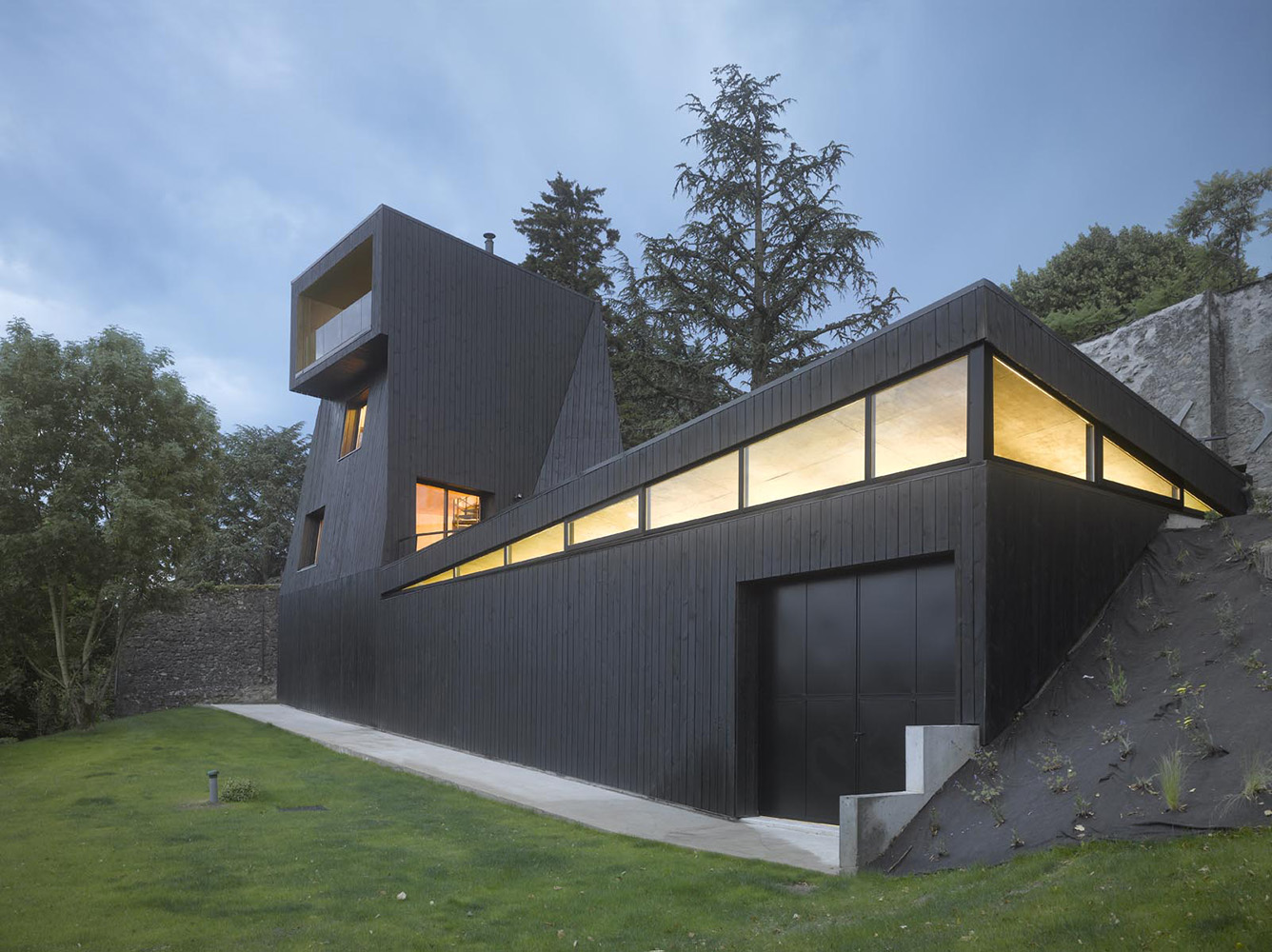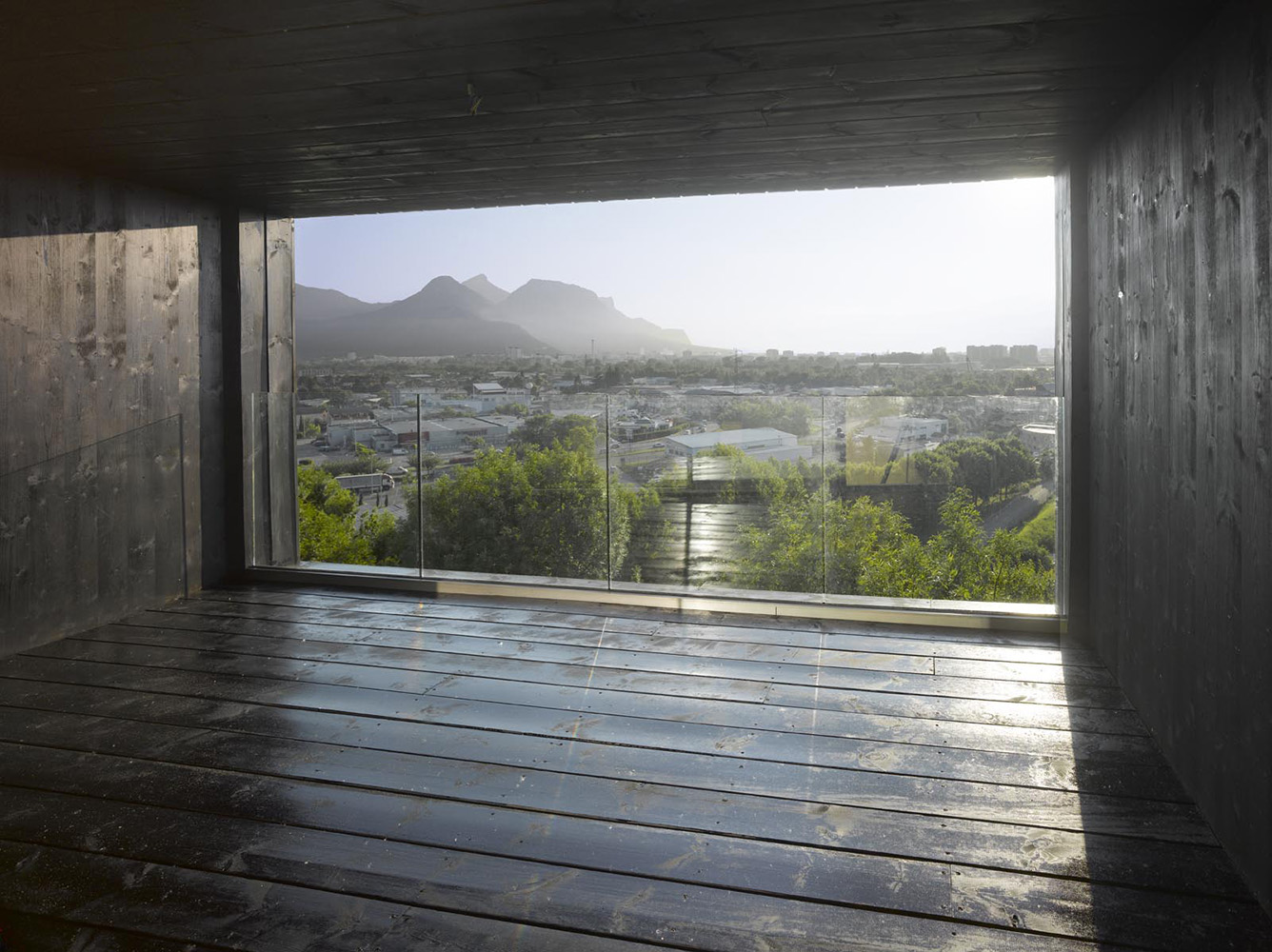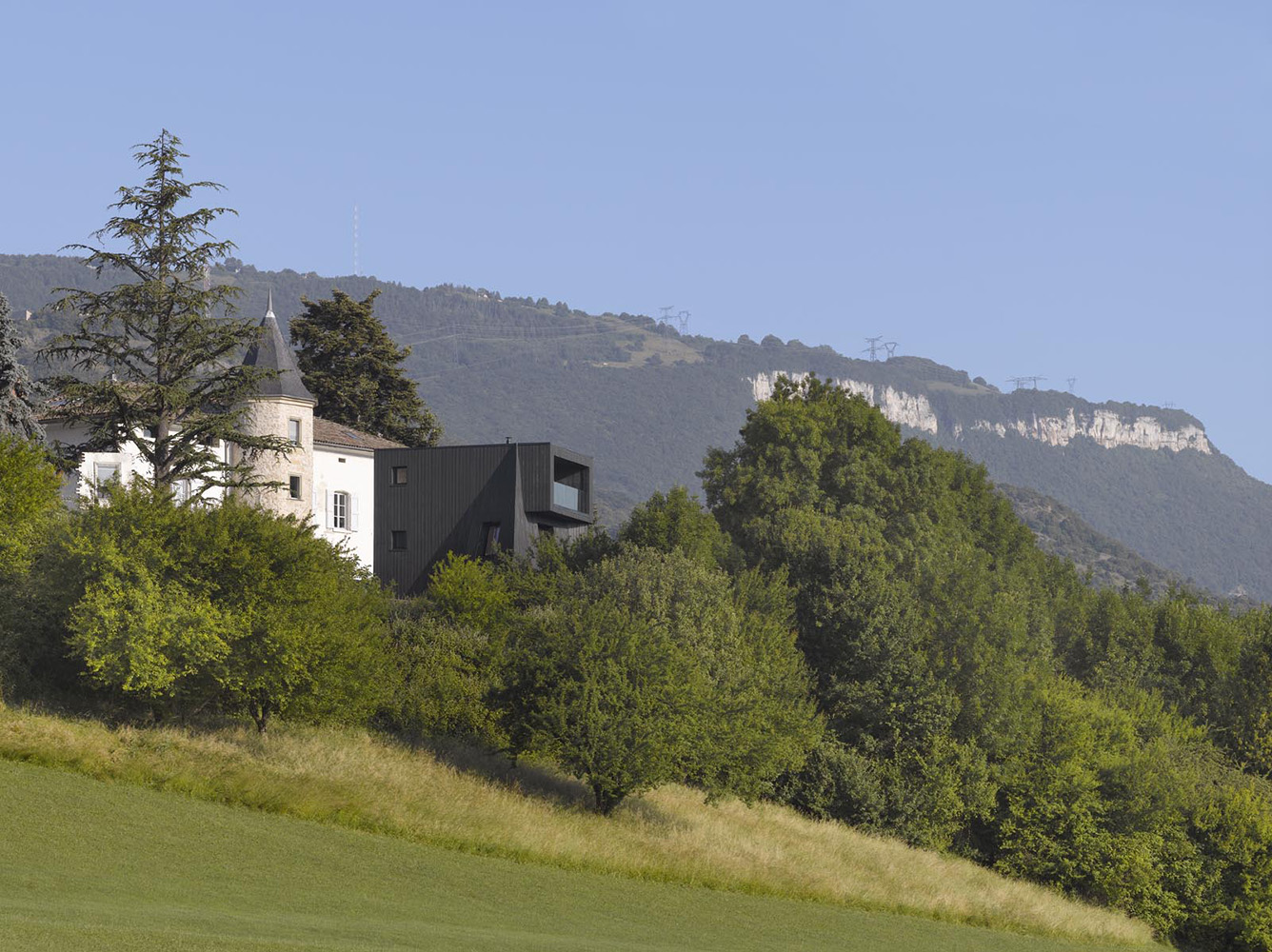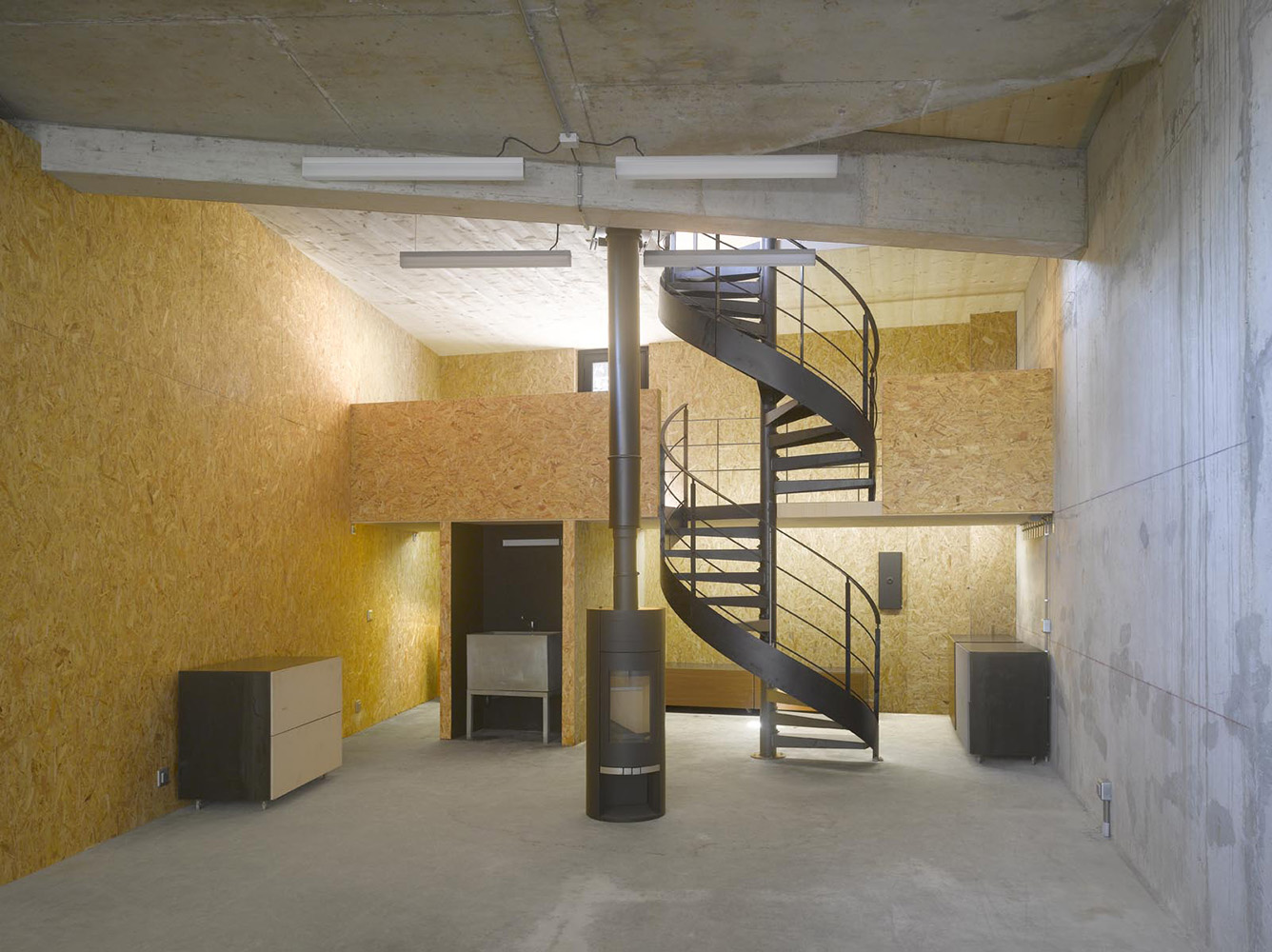Photo credits © Roland Halbe
Perched on the crest of a hill, the residence is a monolithic sculpture —one that turns its back on the rest of the compound, looking out to to the historic city of Grenoble in the valley and the jagged French Alps beyond. Up the slight slope lies a bosque-like park, studded with sculptures from the owner’s collection, and the rest of the Tour Saint-Ange estate, which includes a 17th-century farmhouse, expanded into a villa in the 20th century.
By creating a timber over poured-concrete structure, the house is crafted like a hulking, hovering object. Its dark hue results from the asphalt finish applied to the local pine, which is also used to waterproof the wood hulls of boats.
The rooms in the tower are stacked atop each other and canted, to create enclosing walls with oblique lines that perceptually extend the building’s height. These three stories jut up from a horizontal one-story base for the 1,075-square-foot art studio, which is embedded in the hillside. This concrete plinth bolsters the existing retaining wall at the rear of the house, where the slope extends up to the sculpture garden. Because of the slope, the entrance to the house is accessed from a lower garden on the side. Indoors, a mezzanine overlooks the studio, where clerestory windows illuminate this solid backdrop for the work being created.
A coiling steel start takes you up to a small living/dining area and kitchen, 325 square feet in area, which in turn opens on to a flat deck on the studio’s roof. The stair continues up to the bedroom and bath, also 325 square feet, and then on up to a small study (160 square feet) where a hooded balcony projects out over the landscape. Here, terminating the axis of the spiral stair, is the belvedere with panoramic view above the trees.
Composite board and natural pine clad the interior surfaces, creating a feeling of a vernacular cabin —yet a cabin containing artful pieces of furniture.
« This is a monolithic architecture, a silent piece of art, made entirely from wood. During the daytime, multiple openings on the facade allow the light to pour in from 3 different directions. At night, the wood blinds treated with the exact same finish as the facade, hide the windows and allow the monolith to become all black and quiet once again. »



